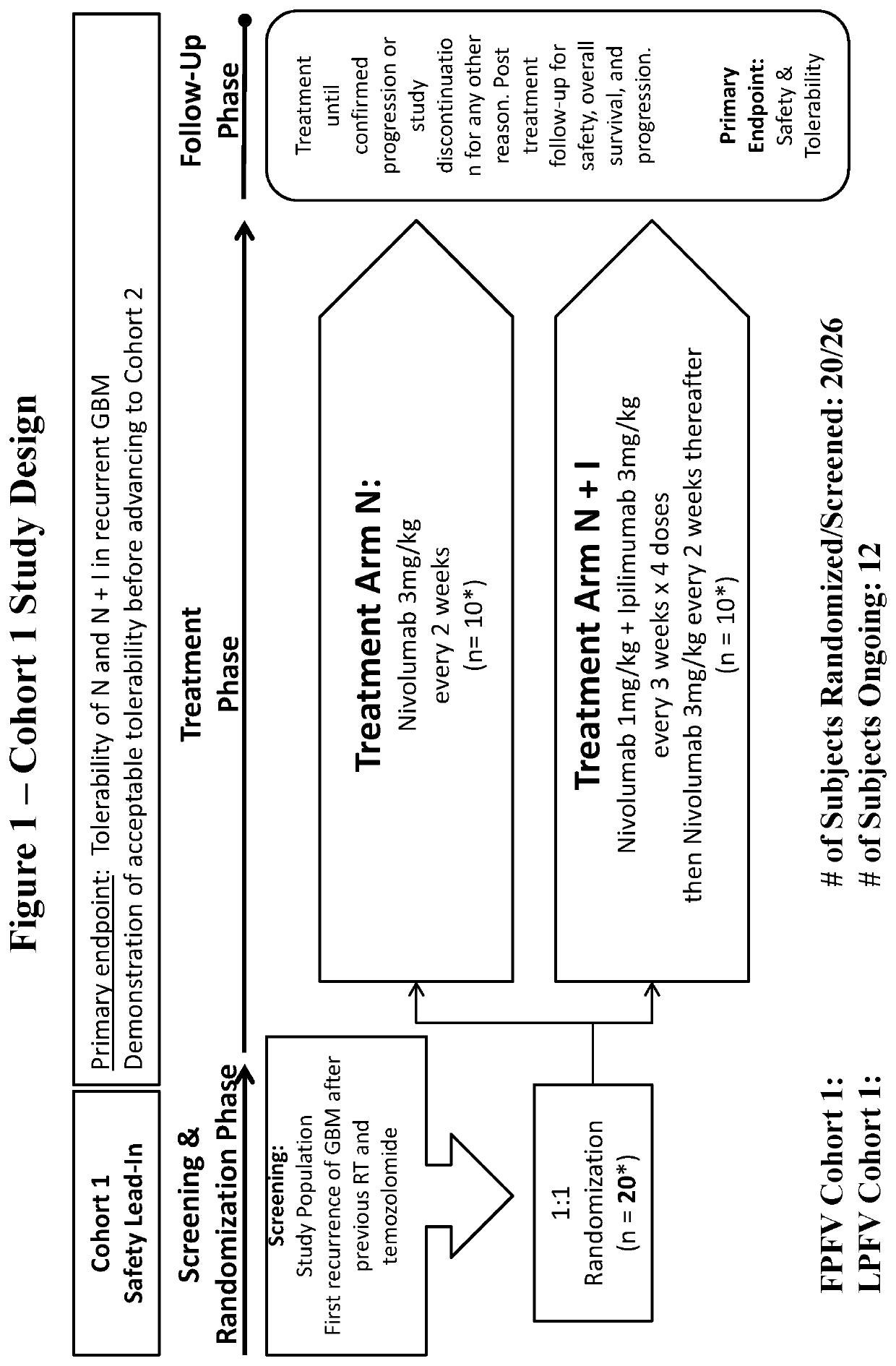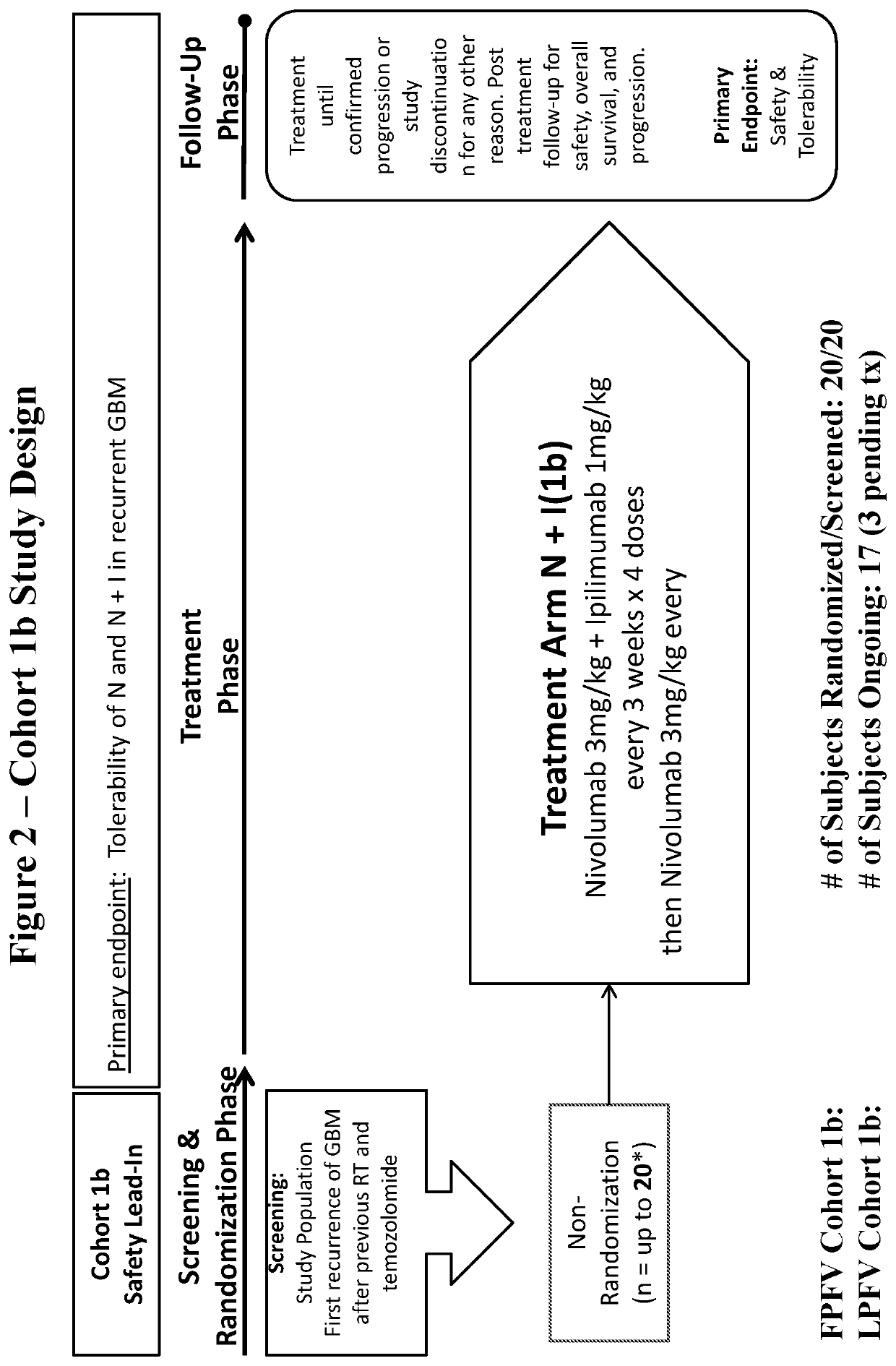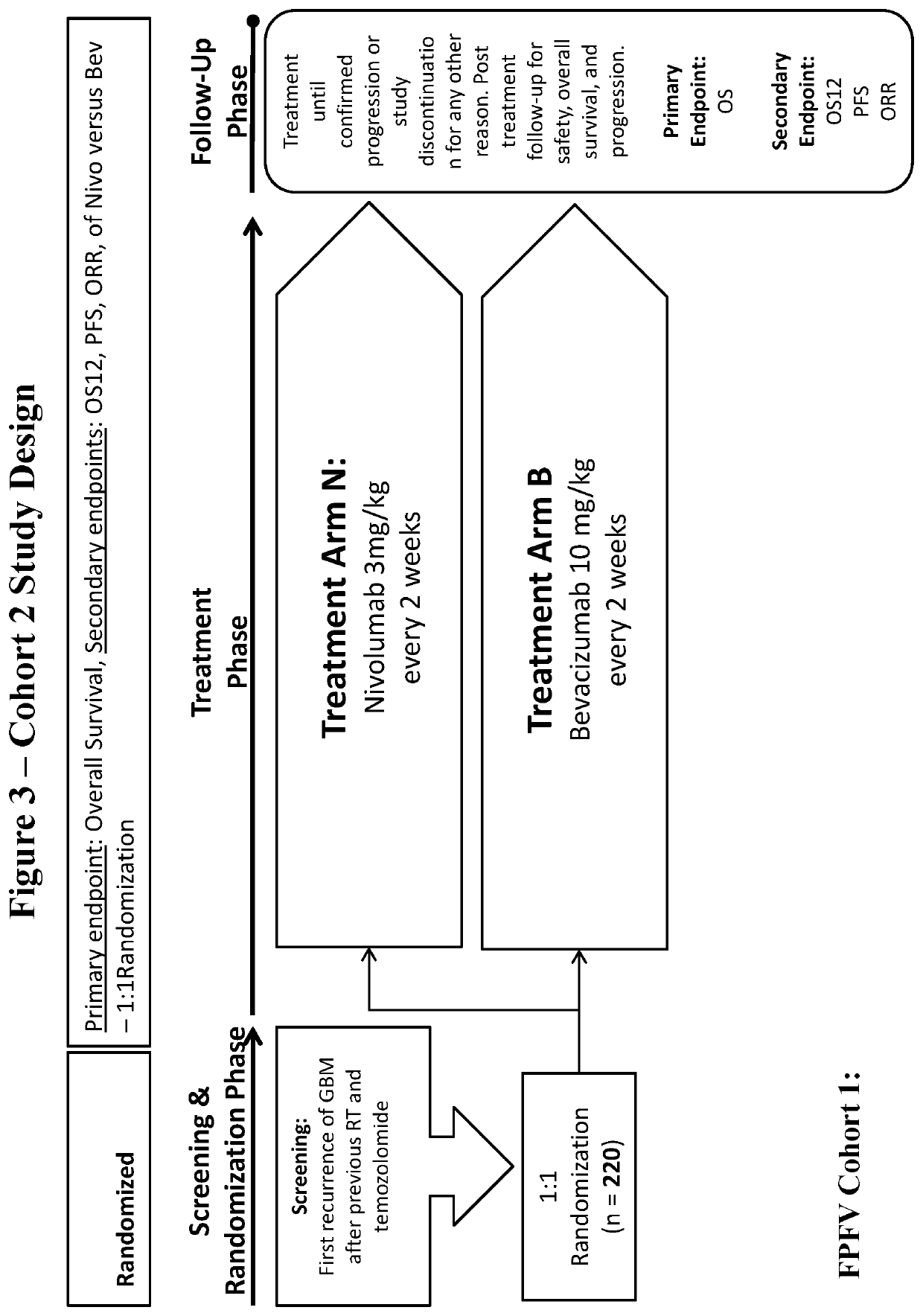Use of immune checkpoint inhibitors in central nervous systems neoplasms
a central nervous system and immune checkpoint technology, applied in the field of glioma treatment, can solve the problems of reducing cognitive function and quality of life of patients treated with bevacizumab, not significantly increasing the overall survival of newly diagnosed gbm above and beyond the standard of care, and high morbidity and mortality, and achieves the effect of inhibiting pd-1 activity
- Summary
- Abstract
- Description
- Claims
- Application Information
AI Technical Summary
Benefits of technology
Problems solved by technology
Method used
Image
Examples
example 1
[0133]Randomized Phase 3 Open Label Study of Nivolumab Versus Bevacizumab and a Safety Study of Nivolumab or Nivolumab in Combination with Ipilimumab in Adult Subjects with Recurrent GBM
[0134]The purposes of this study are to: 1) evaluate the safety and tolerability of nivolumab and nivolumab in combination with ipilimumab in subjects diagnosed with recurrent GBM in a safety lead-in group (Cohort 1, 1b); and 2) to evaluate the safety, tolerability, and efficacy of nivolumab versus standard of care treatment (bevacizumab) in subjects diagnosed with recurrent GBM in a randomized trial (Cohort 2).
[0135]This is the first study examining monoclonal antibodies targeting immune checkpoint inhibitors in subjects with recurrent GBM. To ensure that nivolumab monotherapy and nivolumab in combination with ipilimumab are tolerable, safety lead-in cohorts (Cohort 1, 1b) evaluating the tolerability of two different treatment regimens were initiated prior to advancing a treatment arm into Cohort 2....
example 2
Clinical Review of Cohort 1 Data
[0284]The proposed dosing regimen for nivolumab and ipilimumab in Cohort 1 and 1b was based upon safety and tolerability data from the use of nivolumab and ipilimumab in other tumor types. Although the proposed dosing regimen was expected to be tolerable in subjects with GBM, this study initially included two safety lead-in cohorts (Cohort 1 and 1b) prior to initiation of the efficacy study comparing nivolumab monotherapy versus bevacizumab (Cohort 2). Approximately 10 subjects with recurrent GBM were randomized to each of the two investigational treatment groups in Cohort 1 (Arm N and Arm N+I). Up to 20 subjects with recurrent GBM will be treated in Cohort 1b (Arm N+I_1b).
[0285]Tolerability and safety of a treatment arm was determined after all subjects per arm have completed four doses or discontinued dosing prior to completing four doses. Tolerability beyond four doses may also be taken into consideration. The tolerability criteria used to advance ...
example 3
Cohort 1: Clinical Case Example of Pseudoprogression
[0291]A 67-year old white female subject was initially diagnosed with right occipital GBM in April 2013. The subject underwent a right temporal resection in April 2013 followed by concurrent chemoradiotherapy from May to July of 2013 and everolimus and temozolomide treatment from May to August of 2013. The subject experienced a first recurrence of the GBM in March 2014. This subject was randomized to the nivolumab 3 mg / kg treatment arm, beginning treatment in April 2014. The subject received ten doses of nivolumab 3 mg / kg
[0292]Suspected progression of the GBM was observed by MRI. At baseline, the GBM lesion measured 12 mm×10 mm. Following treatment, at day 43, the lesion measured 20 mm×17 mm; and at day 73, the lesion measured 20 mm×40 mm. MRI images of the subject before treatment (FIGS. 5A and 5B) and after five doses of nivolumab are shown in FIGS. 5C and 5D. The MRI scan after five doses of nivolumab (3 mg / kg Q2W) showed increa...
PUM
| Property | Measurement | Unit |
|---|---|---|
| body weight | aaaaa | aaaaa |
| body weight | aaaaa | aaaaa |
| body weight | aaaaa | aaaaa |
Abstract
Description
Claims
Application Information
 Login to View More
Login to View More - R&D
- Intellectual Property
- Life Sciences
- Materials
- Tech Scout
- Unparalleled Data Quality
- Higher Quality Content
- 60% Fewer Hallucinations
Browse by: Latest US Patents, China's latest patents, Technical Efficacy Thesaurus, Application Domain, Technology Topic, Popular Technical Reports.
© 2025 PatSnap. All rights reserved.Legal|Privacy policy|Modern Slavery Act Transparency Statement|Sitemap|About US| Contact US: help@patsnap.com



